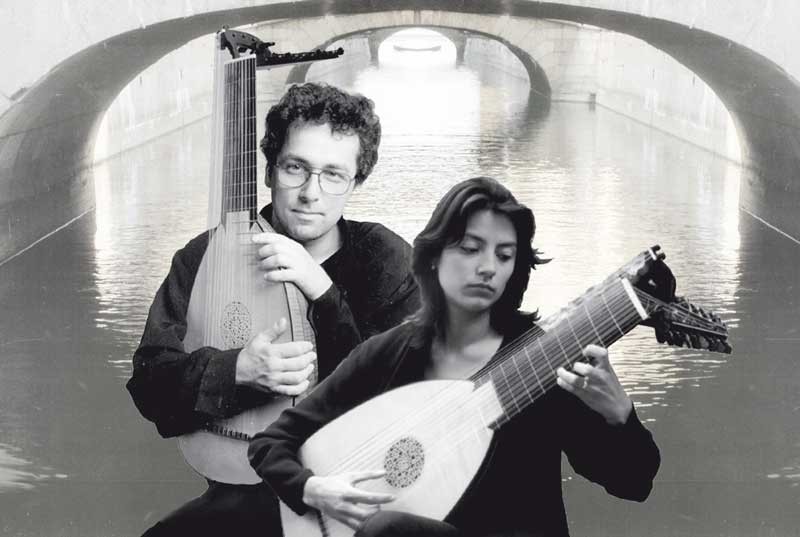
ANNA KOWALSKA baroque lute
ANTON BIRULA baroque lute
Works by:
Ennemond Gaultier, William Lawes, Francois Dufault, Adam Falckenhagen, Joachim Bernhard Hagen, Marin Marais.
Order this CD now! Visit our web shop.
During the past few decades there has been an enormous increase of interest in early music and historical performance. From music by accepted masters such as Bach or Rameau to works by such forgotten figures as Franz Xaver Richter or Jan Dismas Zelenka the sudden surge of interest has lead to an unbridled period of rediscovery and reevaluation. It is in this climate of reawakening that the lute and its music has begun to be appreciated.The aim of this programm is to attract attention to the long neglected repertoire for the Baroque lute duo and to help shed light upon music which was written during the final twilight hours of the lute’s bright history. Performed on two 13 course Baroque lutes, exact copies of the istruments of the time.
Ennemond Gaultier (1575-1651) was one of the finest composers in the long history of the baroque lute. As a figurehead of the early French school of lutenists, E.Gaultier was monumentally influencial in the development of the style brise. This new musical language was one of the first to part with the modal counterpoint of the renaissance. As such, the music of Gaultier affords the modern listener the chance to hear one of the earliest baroque dialects; one which was to have a profound influence on European music from Couperin to Bach.
William Lawes (1602-1645) occupies an important evolutionary position in English music between the generation of Byrd and Gibbons and that of Locke and Purcell. Lawes enjoyed great success in England as an instrumental composer. Though remembered mostly for his keyboard compositions, some of Lawes greatest music lies in the Royal Consort suites with viola da gambas and two theorbos. The present duet is the only extant work of William Lawes for lute duo.
Adam Falckenhagen (1697-1754) was one of the last great lutenists and a master of the Gallant style. Composing in the same general language as J. C. Bach in London and Franz Xaver Richter in Mannheim Falckenhagen combined a fine cantabile melody with dramatic Sturm und Drang chord progressions. Unlike many of his contemporaries a substantial amount of Falckenhagen’s oeuvre has survived until the present day. Aside from two books of virtuosic solo sonatas and six trios from traverso, lute and cello several other compositions, including the present duet in F major appear in manuscript form.
Joachim Bernhard Hagen (1720-1787) is a very perplexing figure in lute music. Biographically he is known mostly as a violinist at the court in Bayreuth.
However, all of his extant music, aside from one violin sonata, is for lute. It is very probable that Hagen was himself a student of Falckenhagen. Technically, Hagen is very much the accomplished lutenist. Stylistically, on the other hand, Hagen is the last of the great lute-composers, writing in a style which no longer bears any ties to the baroque idiom. The duo in c-minor is a wonderfully composed duet which belongs to the Empfindsame Stil, a style most commonly associated with C.P.E .Bach. Brave modulations, sudden sforzando, and richly arranged ornamentation are very typical for the music of Hagen.
Marin Marais (1656-1728) was a French composer and highly influencial viola da gamba player. He studied with arguably the greatest gambist of the age, Monsieur Sainte Colombe. Marais himself wrote some of the most beautiful and challenging Gamba music to date. His most important compositional works were published in five collections between 1686 and 1725. The pieces de violes contained in the livres fall into two distinct compositional categories Melodic and harmonic. The melodic one uses sublimely simple melodic expression combined with only ornamentation and simple cadential forms. The harmonic style, through extremely clever combinations of melodic ideas and chordal progressions, attempts to express complex interwoven textures. Allemande & Gavotte in d-minor as well as Chaconne in G, though originally composed for two violes and B.C., fell wonderfully within the range of the lute duo.